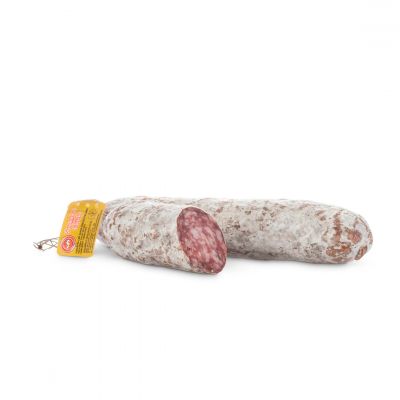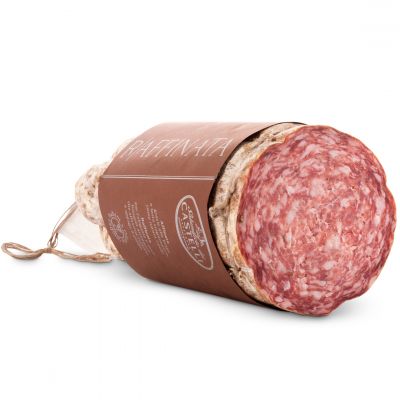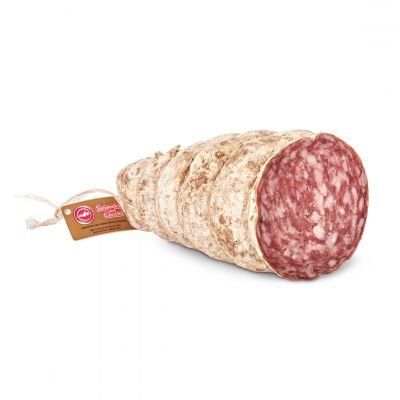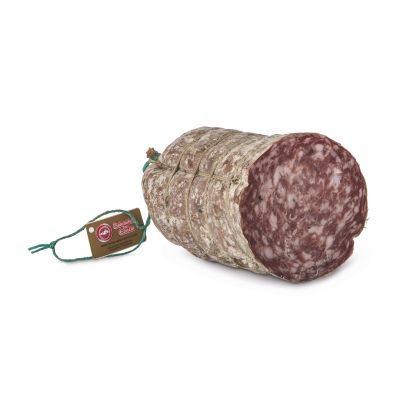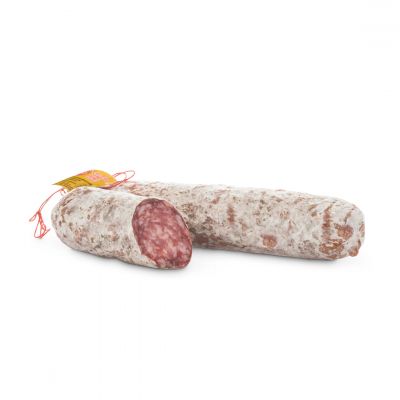THE CASTLES ARE THOSE OF GIULIETTA AND ROMEO, WHICH FROM THE ANCIENT HAMLET OF MONTECCHIO MAGGIORE (VI) TOWER ABOVE THE LIVELY TOWN, WHERE THE SALUMIFICIO DEI CASTELLI IS LOCATED: WE WENT TO SEE HOW SALAME NOSTRANO IS PRODUCED, THE NEW PRODUCT WE ARE INTRODUCING YOU TODAY
I set Montecchio Maggiore on the GPS and, as I automatically follow the road, my thoughts go back to the legend of Montecchio's two Scaliger fortresses: Castello della Bella Guardia and Castello della Villa, better known as Juliet's and Romeo's Castles.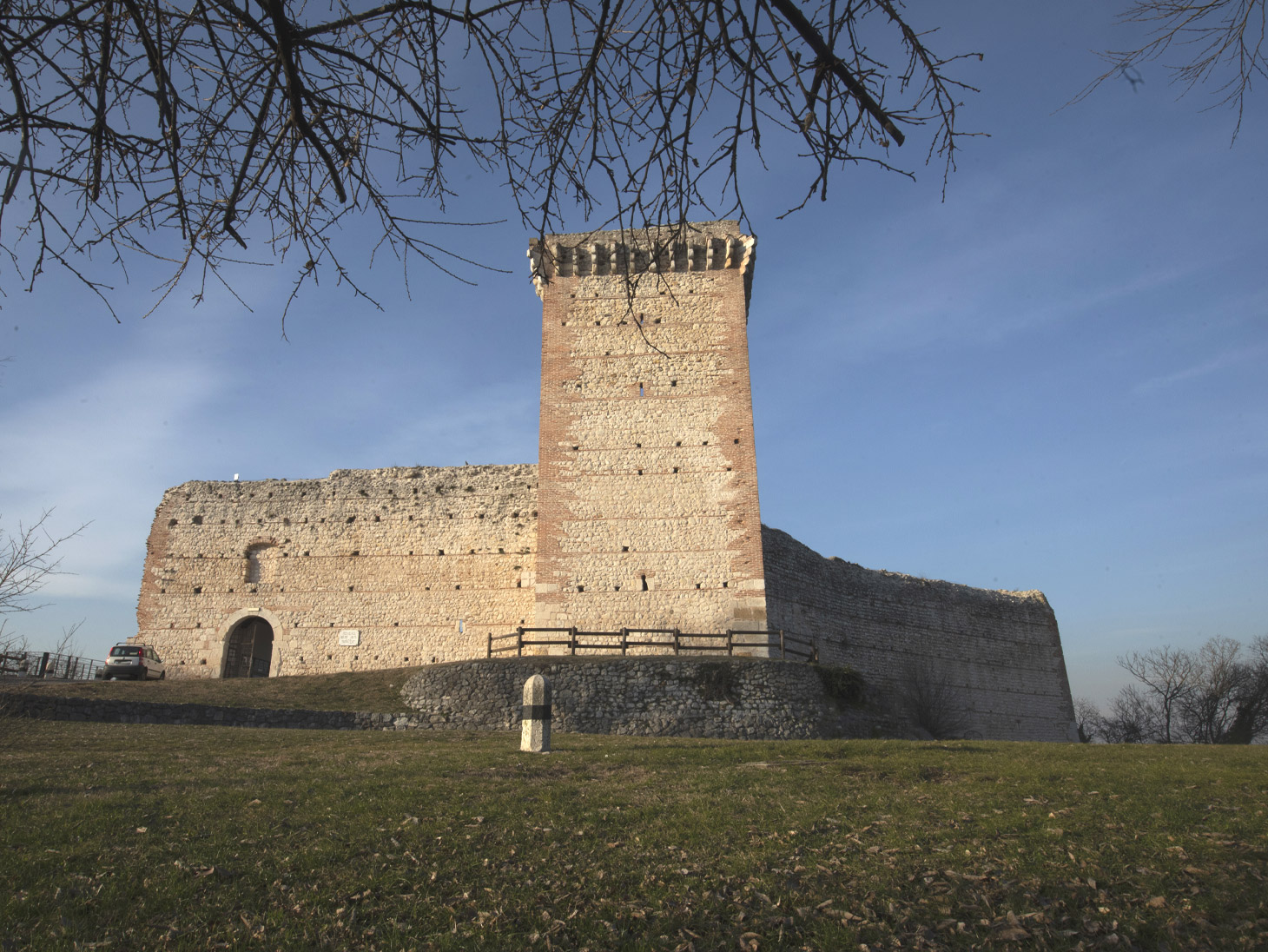
The two castles are looking down on each other from two neighbouring heights, in the "Pieve" of Montecchio: according to a legend born in the mid 19th century, they are said to have inspired the writer Luigi Da Porto in his novel Historia novellamente ritrovata, from which Shakespeare is said to have taken inspiration in turn. I had imagined a romantic medieval village, instead Montecchio is a lively industrious town.
There is no shortage of stories to tell, however, and Marco Fantin is a good minstrel: 40 years old in June, a solid classical culture that comes through in the way he tells his story, a degree in chemical engineering and a passion for music that has always accompanied him. He has taken over the family business, which he runs with his dad Flori and his mom Patrizia, with respect and commitment.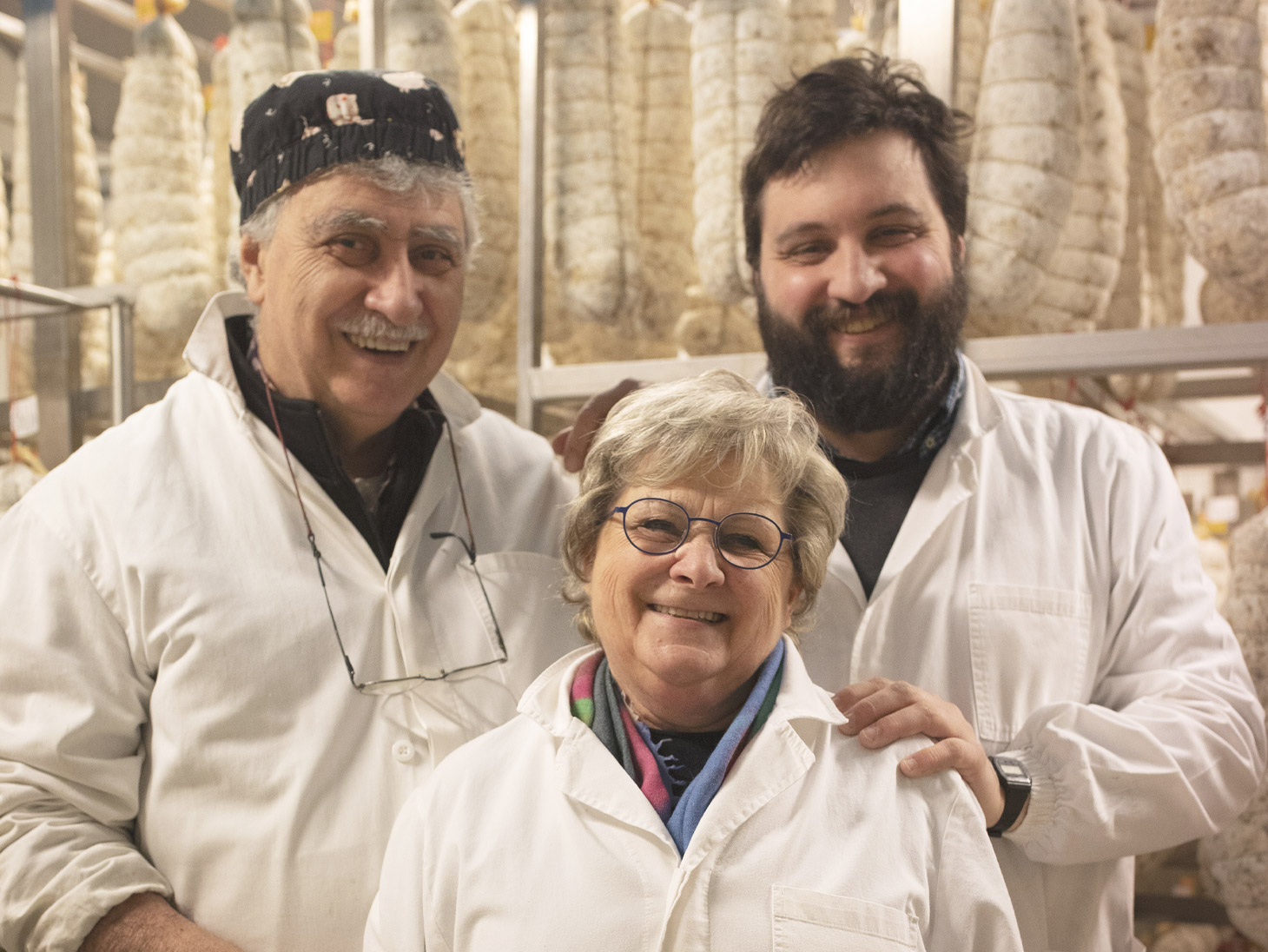
The Fantin's is a family of butchers: Marco's grandfather was in charge of the municipal butcher's shop in Vicenza, a meat wholesaler with a small production of cured meats, which was run by Flori. And it was there that Flori became passionate about the production of cured meats until he decided, in 1998, to open his "Salumificio dei Castelli".
Today, the cured-ham factory is mainly focused on the production of salami, sopresse and cotechini, although it also retains a small part of fresh meat sales. Flori is in charge of production, but he is also the handyman who has learnt over the years how to adjust the various equipment used in production. Marco takes care of sales, production planning, new products, warehouse management and shipping.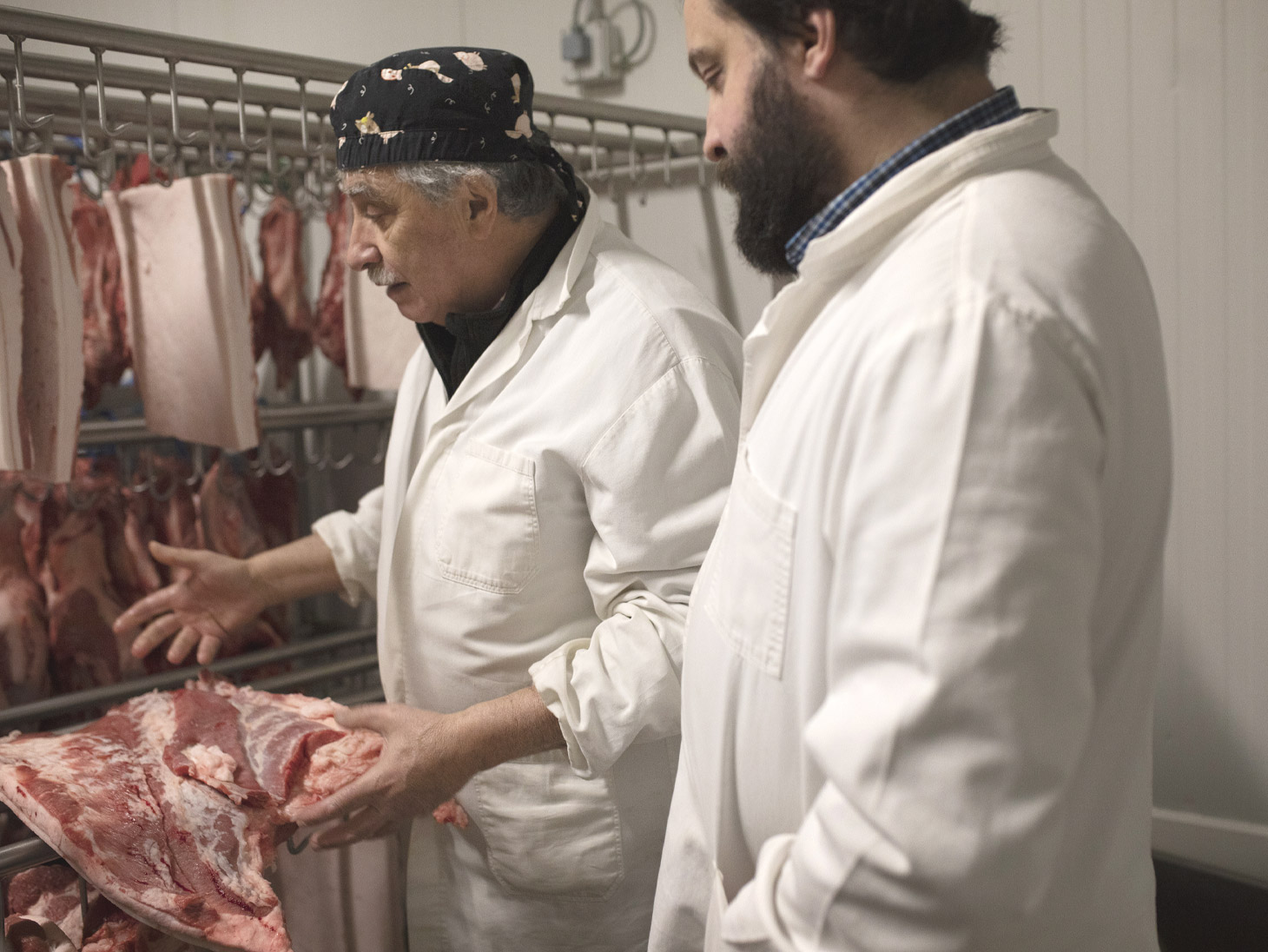
Patrizia, on the other hand, is mainly in the office, taking care of administration. "I also take care of cooking cotechini and pancette: they all are my recipes" - she tells us. She looks so little and fragil next to her son and husband - "but she is the real boss" - the two men tell us. And really, it goes without saying: the visit is an entertaining theatre of bickering and scolding, as anyone who works in a family business knows very well.
It doesn't surprise us that "sopressa is the obsession" of the Fantins: we are in the "Homeland of Sopressa", which - Marco tells us - first appears in a 1577 painting by the painter Jacopo Da Ponte "Christ in the House of Martha Mary and Lazarus", preserved in the Pitti Palace in Florence. Sopressa is indeed a cured meat that finds its roots in this area: before the end of the 19th century, none hear of sopressa outside the Vicenza area; not even in the Treviso area, where sopressa has also made its history.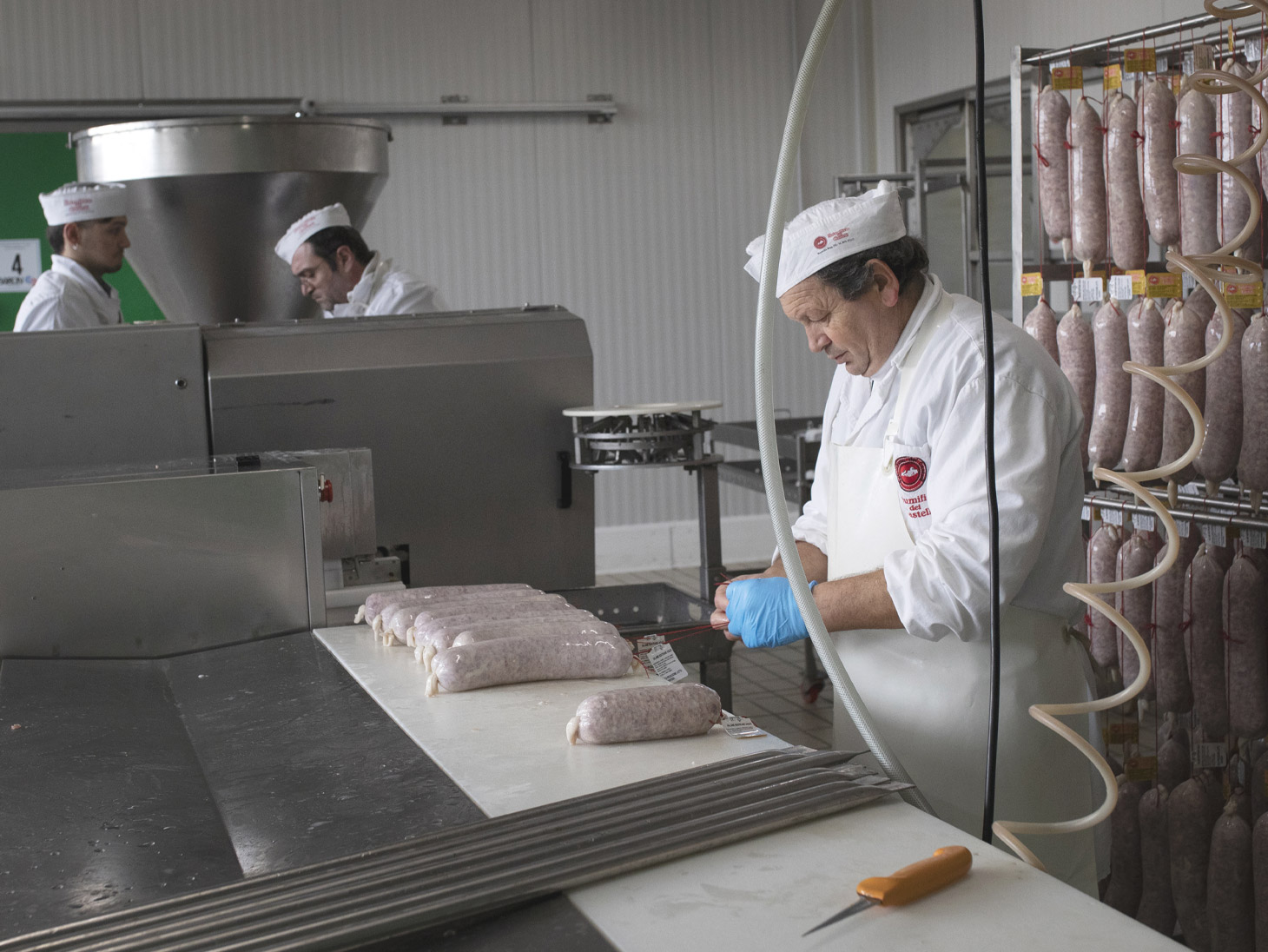
But back to us. We are here to see up close the production of Salame Nostrano and to experience by first-hand the two main reasons why we chose Salumificio dei Castelli: careful processing, where every step is still done by hand; and maniacal care in curing. Let's go step by step: the processing cycle is weekly. Monday and Wednesday the raw material arrives from four carefully selected slaughterhouses.
In the afternoon the half-carcasses are "boned hot" - that is, before reaching 7°C at the heart. The anatomical pieces are cut, and reduced to the size of a fist, rigorously done by hand, according to a strict method. Let's take for example a bacon: a specific cut is always destined for sopressa, another one for salami and another part for cotechini.
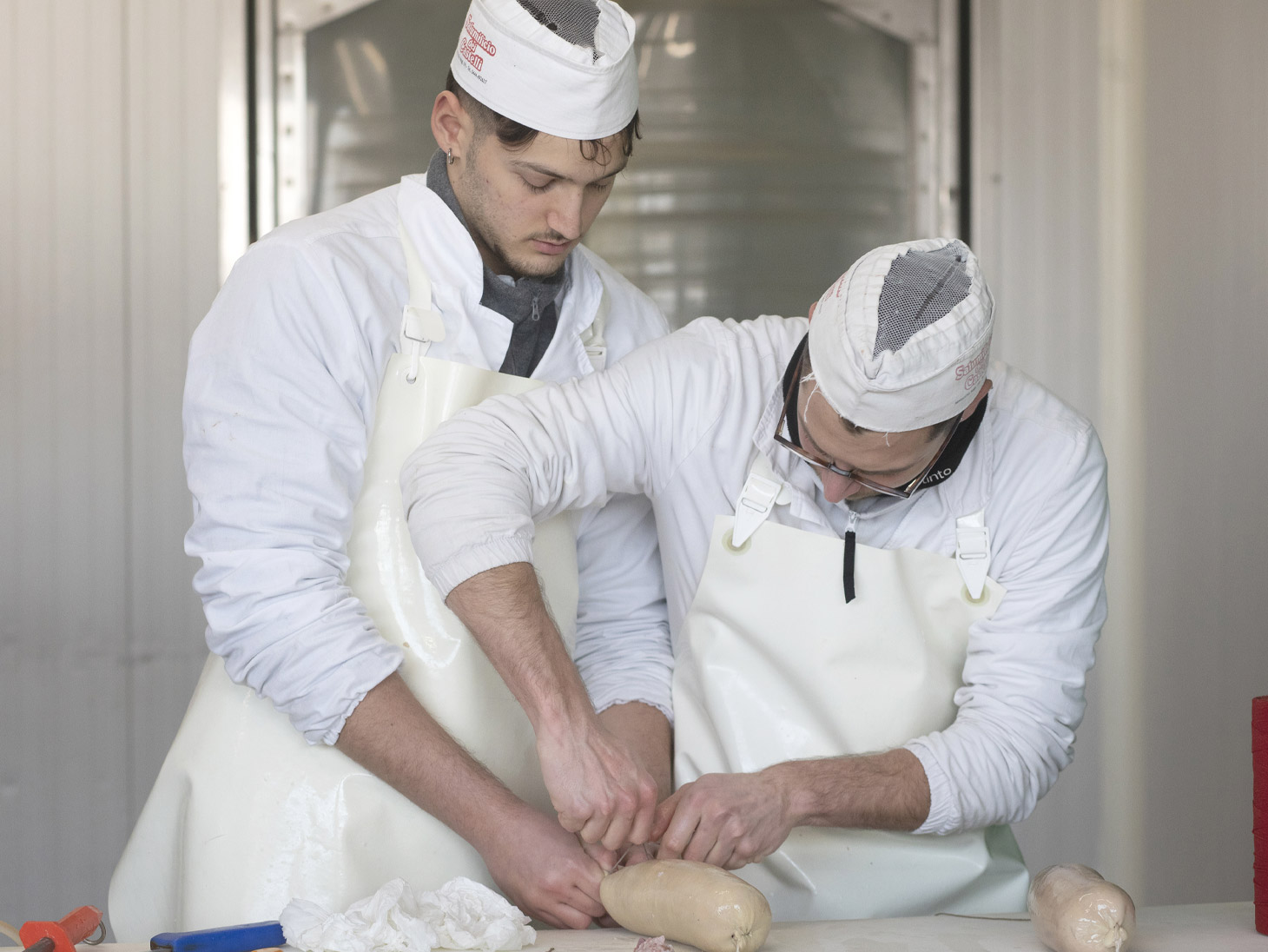
The cuts then rest in the "vagonetti" - steel tubs with wheels - until further processing, while the fat is drained off. The next afternoon, the "recipe" is prepared: from the tubs the meat goes directly into the mincer and is then conveyed by a belt into the kneading machine. "In this way, the meat is not crushed, as it would be if it were put back into the tubs once it has been minced, but remains soft and passes directly into the kneading machine, where it is processed evenly" - Flori points out.
It should also be remembered that Fantin family cured meats are free of dairy derivatives, sources of gluten and glutamate; only salt, spices and natural flavourings are added to the meat, as well as a modest amount of sodium nitrite and potassium nitrate, less than 50% of the legal limit.
Once the dough is ready, it is put back into the tubs and returned to the cell to rest again until the next day, when it is transferred directly, without being touched, into the bagging machine.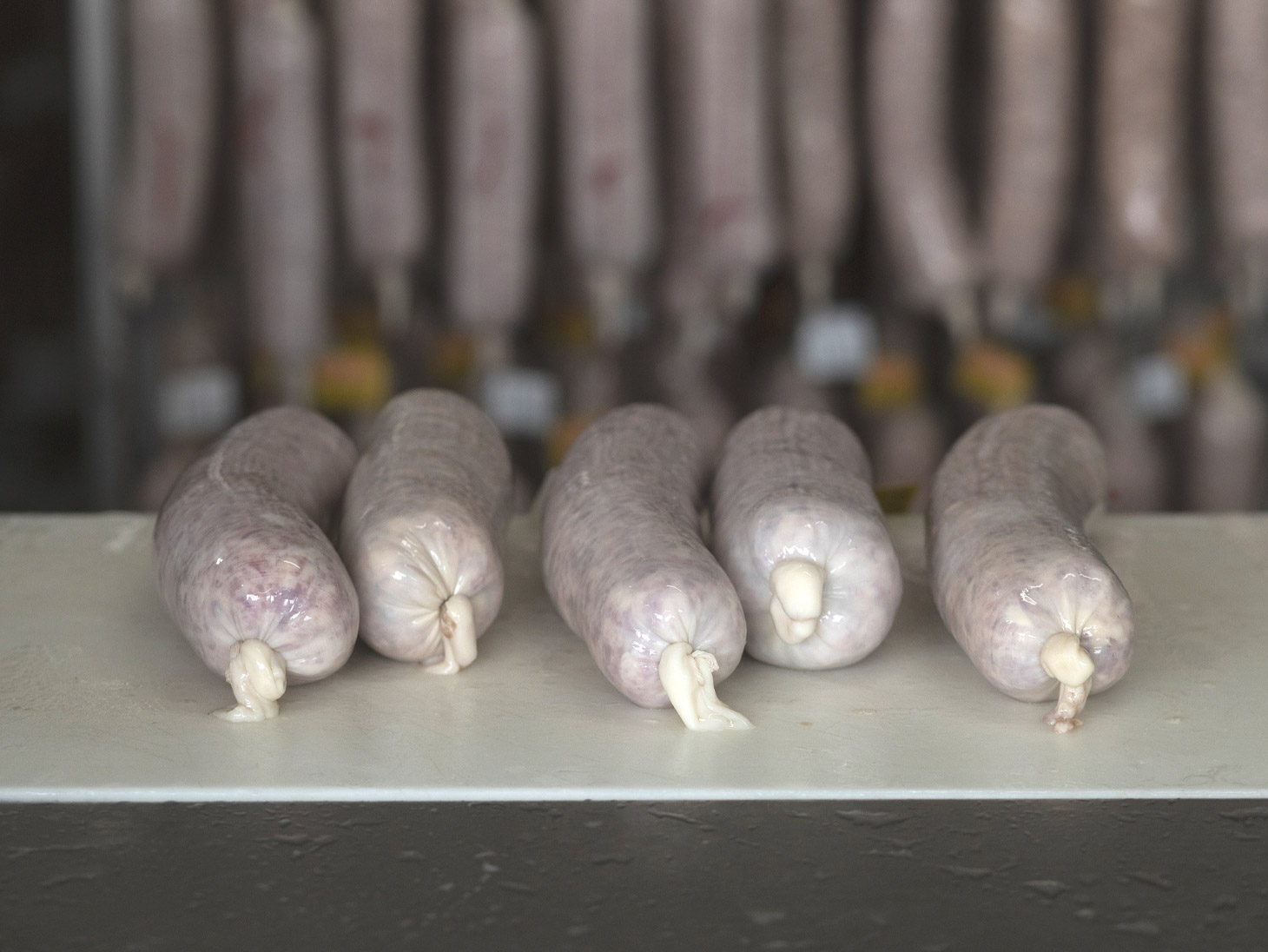
"An important element that distinguishes our Salame Nostrano is the casing: saying that it is natural casing is not enough, even glued casing can be declared natural casing, but they are obtained by reassembling parts of casing. Instead, for Salame Nostrano we use whole beef gut as per tradition". Patrizia takes us into the cell where the casings are stored so that we can experience the difference.
After witnessing the salami being stuffed, we move from the processing room to the cells: "fermentation and drying are the two components of the maturing process" - explains Marco.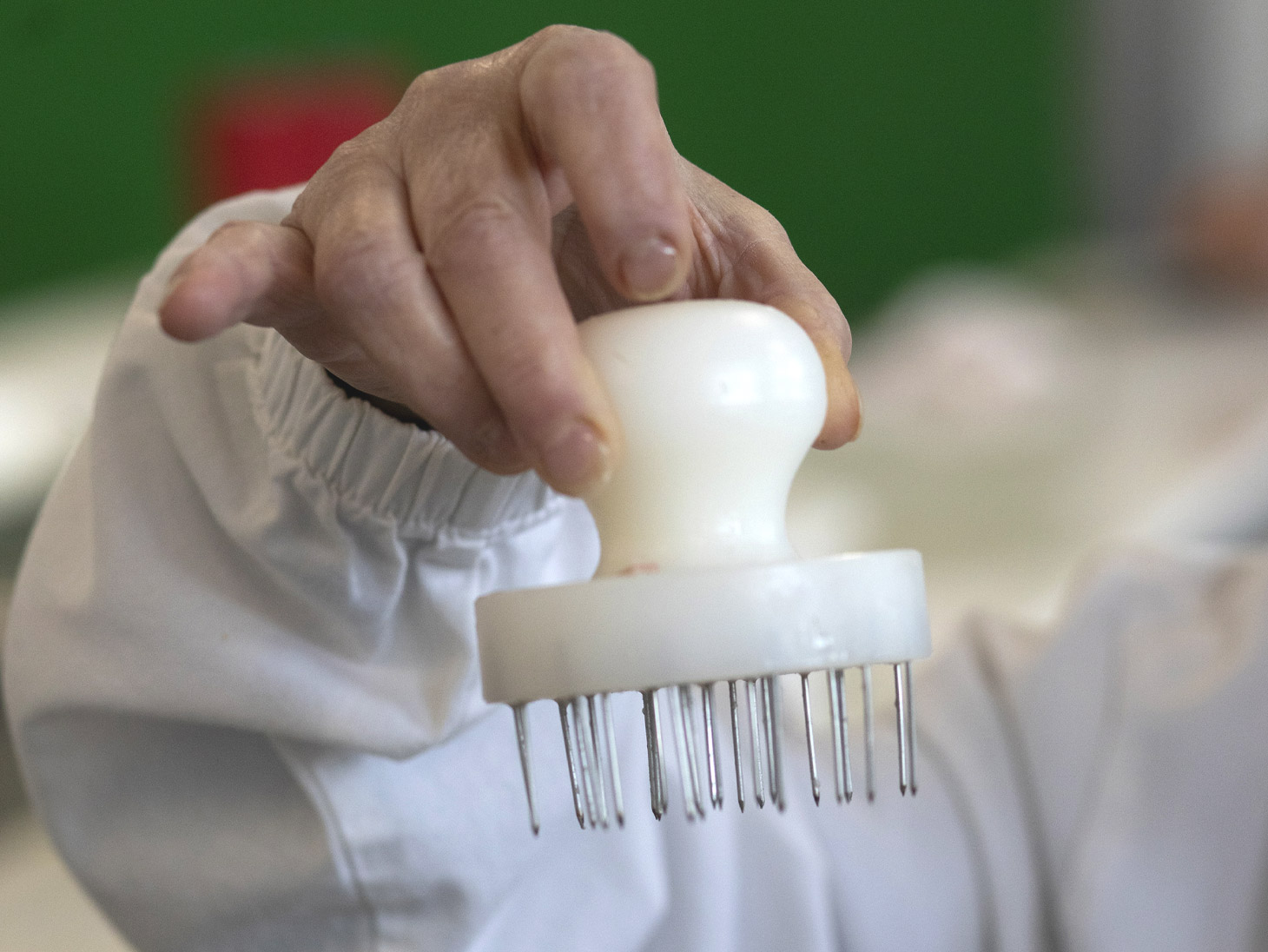
The first stage is drying: salami and sopresse must lose moisture as evenly as possible in order for the curing process to be uniform. After processing, the salami is hung on trolleys and left to drip in the drying room for half a day at 22°C, with no humidity set, to activate the lactobacilli needed to trigger the maturing process in the meat.
"We then gradually lower the temperature and raise the humidity until, within about a week, we reach 12°C with 80% of humidity. Monitoring is constant: depending on how the drying process is progressing, we adjust the temperature and humidity parameters to achieve the desired result. It's like wringing out a towel a little at a time" - Marco jokes.
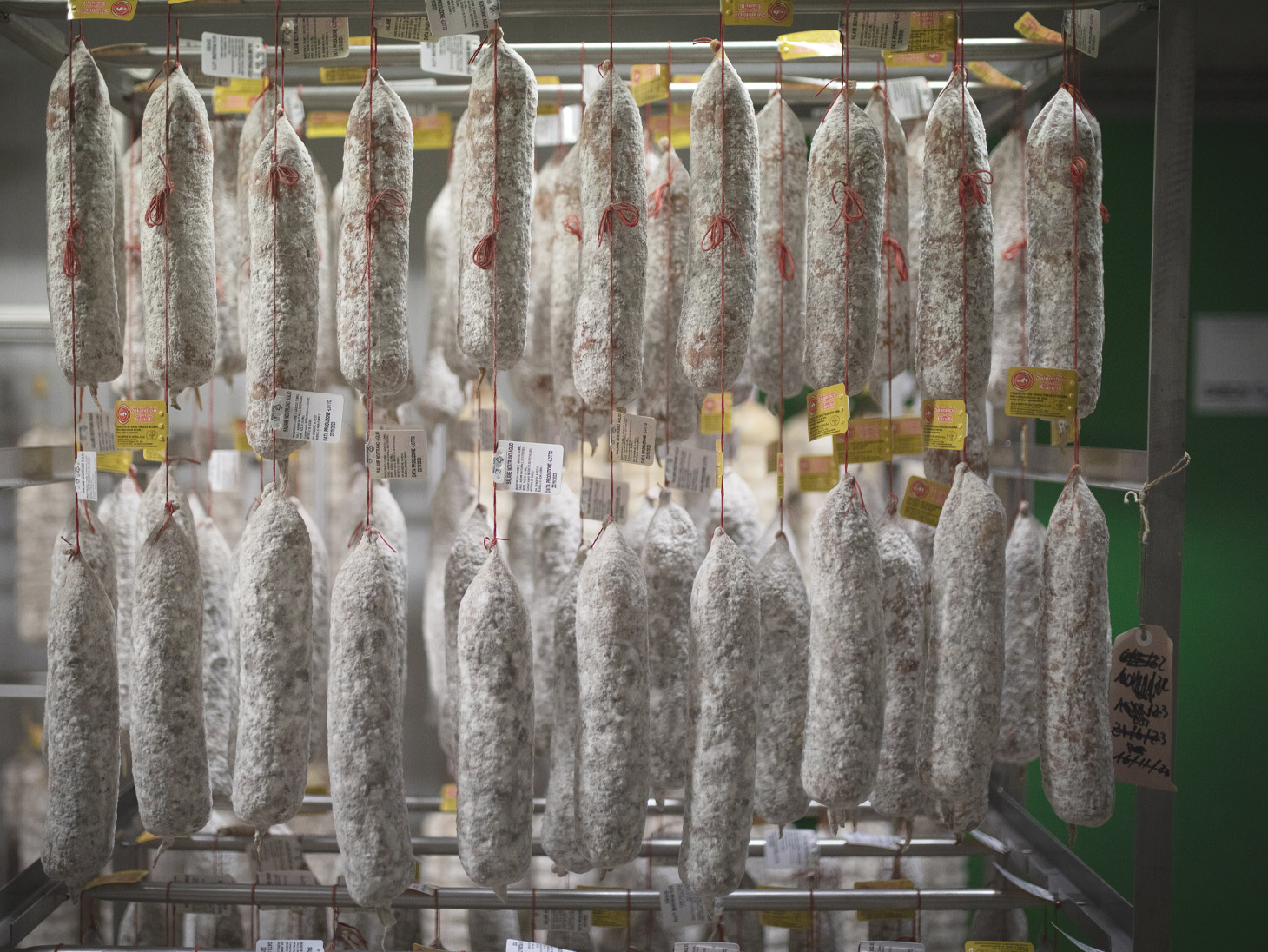
After a week of drying, the sopressa passes into a first ventilated maturing cell, where it remain for about a month, before being transferred for a further two months to another cell, again ventilated, but with somewhat lower humidity. The last "quarter" of the maturing process finally takes place in a static cell, with a humidity of 82-92%.
It is here that the maturing process is "finished" or "refined", where Marco "pampers" his sopressa: the lenght of seasoning in an artisanal product is never definite, it always depends on many factors, such as the characteristics of raw material or the environmental and also weather conditions. The scent of the cell is that of mature cured meats, aged without haste, respecting the seasoning times, as the tradition teaches us.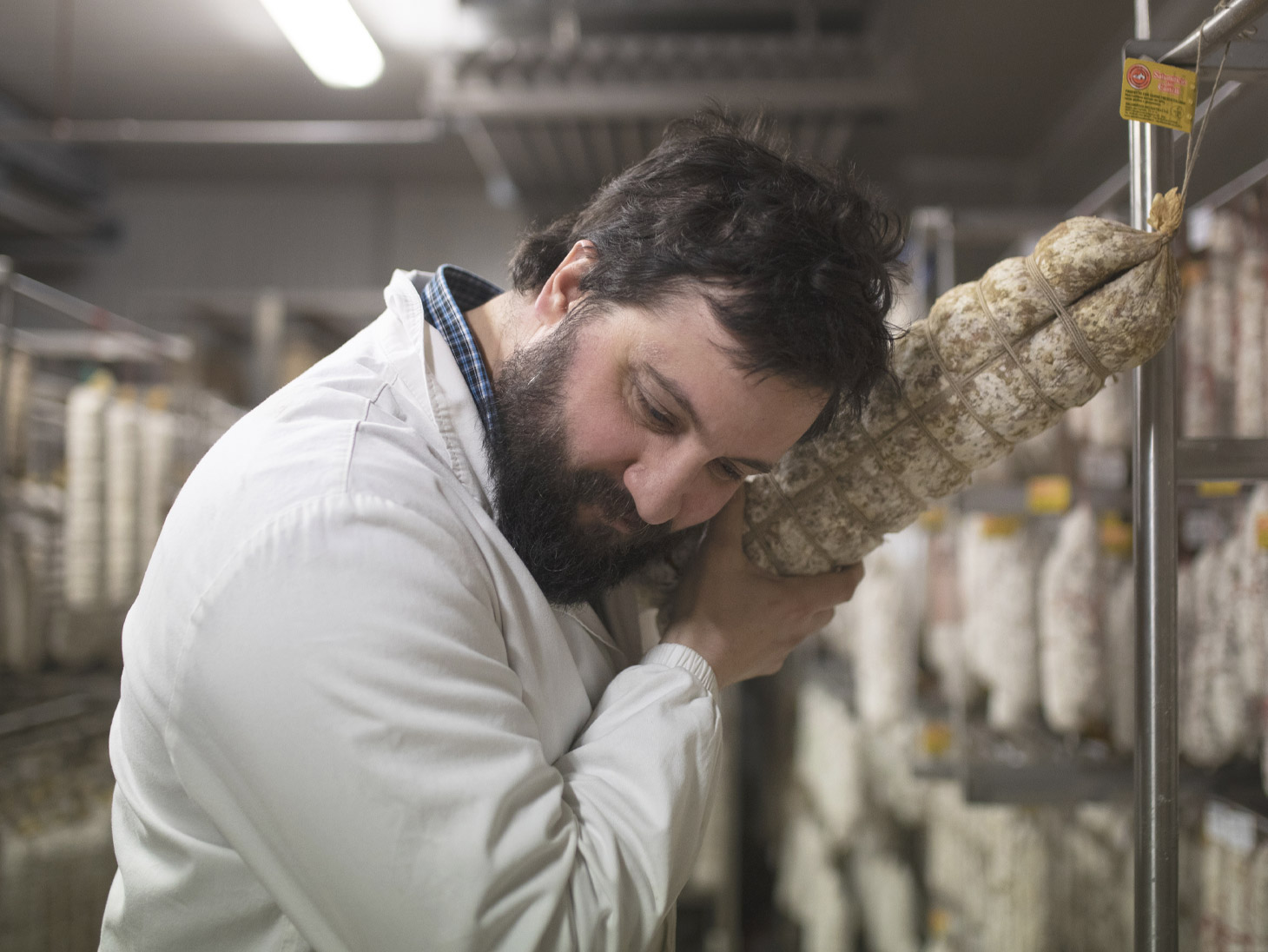
It's time to go back, but I can't do it without a detour to the Castles of Romeo and Juliet. It may be a legend, but it still has its charm. The silence, the view of the Berici hills, the suggestion of romantic tragedy seal this day. And I feel privileged by my job, which brings me to visit so many small artisans like the Fantin's family, who today opened us with affection the door of their home and their family history.




